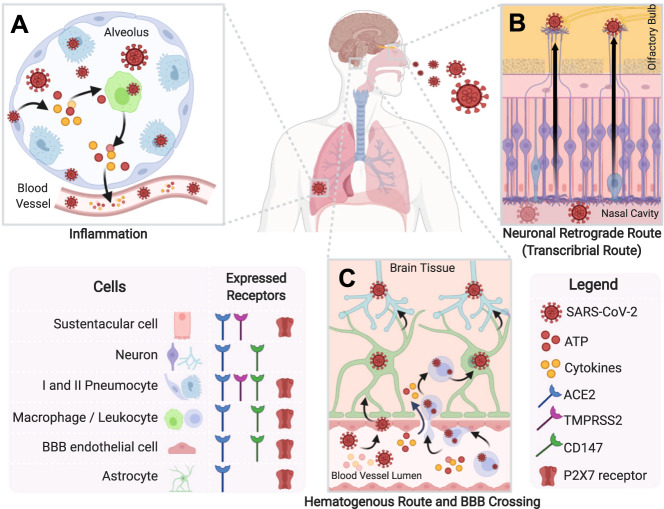Fig. 1. Possible routes of SARS-CoV-2 infection of the central nervous system and cytokine storm involvement.
A In the lung, SARS-CoV-2 may infect type I and II pneumocytes (dark and light blue, respectively) and proliferate in these cells. SARS-CoV-2 invades type I pneumocytes following binding to TMPRSS2 and possibly CD147 receptors, whereas invasion of type II pneumocytes additionally involves binding to ACE2 [171, 172]. The distressed cells release pro-inflammatory factors and DAMPs, such as ATP, which recruit macrophages (green) by activating P2X7 receptors. These macrophages increase the release of cytokines, chemokines, and ATP, inducing the cytokine storm. ATP could also activate P2X7 receptors in type I pneumocytes. These pro-inflammatory factors, as well as the virus, reach the circulatory system and can induce inflammatory responses in other tissues, in part through the activation of P2X7 receptors by released ATP. B In the neuronal retrograde pathway, the virus infects peripheral neurons and uses synaptic connections to reach the CNS. In the transcribrial pathway, SARS-CoV-2 can multiply in sustentacular cells (pink) of the nasal cavity, using ACE2 and TMPRSS2 receptors for infection or in olfactory sensory neurons (purple) following binding to CD147 receptors. Thus, the virus uses these neurons to reach the CNS olfactory bulb (yellow) and infect cells using ACE2 receptors [173]. Sustentacular cells express P2X7 receptors [174]. C Once in the bloodstream, the virus can reach and infect blood–brain barrier (BBB) endothelial cells (pink), through binding to ACE2 and CD147 [175], and perivascular astrocytes (green), through binding to ACE2 [172]. In COVID-19, the BBB shows increased permeability due to the inflammatory process and death of endothelial cells and astrocytes, possibly resulting from P2X7 receptor activation. Although not yet confirmed, the virus could infect monocytes (purple) using CD147 receptors [176], which in turn can pass the BBB. Inside the CNS, the virus can infect neurons (blue) and other neural cell, by binding to ACE2 [173] and possibly to CD147 [177]. Moreover, cytokines present in circulating blood can also reach the CNS through BBB breaches and induce neuroinflammation, sensitizing the brain. Created with BioRender.com.

